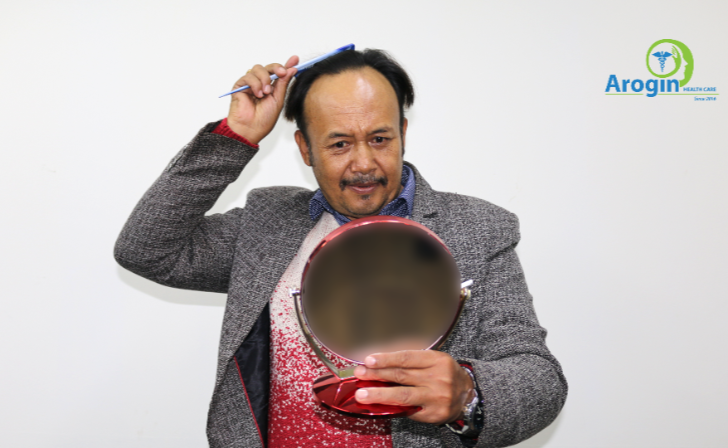Hair Transplant Failure: Causes, Prevention, and How to Ensure Success

Before undergoing any procedure, patients must understand what causes transplant failures and how to avoid them.
What Does Hair Transplant Failure Really Mean?
Hair transplant “failure” can mean different things for different patients, but medically it usually refers to one or more of the following:
- Low graft survival rate — less than 80–90% of implanted follicles grow successfully.
- Unnatural appearance — hairline looks artificial, density is uneven, or angles are incorrect.
- Visible scarring — in donor or recipient areas due to poor surgical technique.
- Patchy or uneven growth — some areas have hair, others remain bare.
- Complete graft loss — follicles do not grow at all.
Sometimes, a transplant may not meet patient expectations even if technically successful — which is why realistic planning is crucial.
8 Major Causes of Hair Transplant Failure
1. Lack of Surgeon Skill and Experience
A hair transplant is a microsurgical procedure requiring high precision. An inexperienced surgeon may:
- Damage follicles during extraction (graft transection), making them non-viable.
- Place grafts at incorrect angles or depths, causing unnatural growth patterns.
- Design a poor hairline that looks artificial.
- Overharvest donor areas, leaving visible scars.
Hair restoration is both science and art — the surgeon must have technical expertise and an aesthetic eye. At Arogin, each procedure is performed by specialists with years of experience and international exposure.
2. Outdated or Incorrect Techniques
Not all hair transplant techniques are equal. Common outdated methods include:
- FUT (Strip Surgery) — can leave a long scar and has longer healing time.
- Unrefined FUE — if performed carelessly, can result in low survival rates.
With our B.E.S.T. technique, grafts are extracted and implanted simultaneously, minimizing their time outside the body. ATP solution nourishes follicles until they are implanted, increasing survival rates and speeding up recovery.
3. Poor Donor Area Management
Your donor area is your permanent hair bank. Poor donor management can:
- Lead to visible bald patches at the back or sides of the head.
- Limit options for future restoration.
- Result in poor hair growth due to damaged follicles.
Our team uses advanced mapping to ensure we extract only what’s needed without compromising density.
4. Improper Handling of Grafts
Hair follicles are living structures — once removed, they must be kept hydrated, at the right temperature, and handled gently.
Common mistakes in other clinics include:
- Leaving grafts in open air too long.
- Not using proper storage solutions.
- Rough handling with forceps, damaging delicate tissue.
We minimize graft exposure time and use bio-enhancement methods to ensure every follicle stays healthy until implantation.
5. Unrealistic Patient Expectations
A skilled surgeon can work wonders — but even they cannot create unlimited hair density from a limited donor supply. Patients expecting teenage-level density after extensive baldness may feel disappointed if not properly guided.
At Arogin, we conduct detailed consultations, use 3D imaging, and design age-appropriate, natural hairlines to ensure satisfaction.
6. Ignoring Post-Surgery Care Instructions
Post-transplant care plays a massive role in the final outcome. Activities that can damage newly implanted follicles include:
- Touching or scratching the recipient area.
- Sleeping without protecting the grafts.
- Exposure to sunlight, dust, or pollution too early.
- Resuming intense workouts too soon.
- Smoking and alcohol, which slow healing.
Our patients receive a personalized recovery plan and follow-up support to avoid these pitfalls.
7. Undiagnosed Medical Conditions
Certain health conditions can compromise healing and hair growth:
- Uncontrolled diabetes — slows recovery and increases infection risk.
- Thyroid disorders — affect hair growth cycles.
- Autoimmune conditions — may cause the body to reject grafts.
- Severe scalp infections — interfere with healing.
We perform comprehensive medical screening before surgery to ensure suitability.
8. Shock Loss or Poor Recipient Site Health
Shock loss is temporary shedding of existing hair after surgery due to trauma. While it usually resolves, poor technique or weak scalp health can make it permanent. Proper surgical planning and care reduce this risk.
How to Prevent Hair Transplant Failure
1. Choose the Right Clinic
Look for:
- Verified credentials.
- Consistent before-and-after results.
- Advanced technology.
- A transparent approach to patient education.
2. Get a Comprehensive Medical Assessment
Identify and treat underlying conditions before surgery.
3. Follow All Post-Op Instructions
Your recovery habits directly affect graft survival.
4. Have Realistic Goals
Work with your surgeon to design a natural, age-appropriate hairline that matches donor availability.
Why Arogin Health Care Has Near-Zero Failure Rates
At Arogin, success is not a matter of chance — it’s a result of precision, innovation, and patient care:
- Patented B.E.S.T. Technique — Advanced, bio-enhanced method with ATP solution for maximum graft survival.
- International-Level Results — Comparable to leading global clinics.
- Expert Team — Specialists with extensive training and experience.
- Ethical Approach — No overpromising, only realistic, achievable results.
- Post-Op Support — Step-by-step guidance until full recovery.
Conclusion
Although it is very avoidable, a botched hair transplant can have long-lasting emotional and financial repercussions. The correct method, the right surgeon, the right clinic, and proper post-operative care are all essential for success.
At Arogin Health Care, we've established a solid reputation for using the B.E.S.T. approach to offer natural, long-lasting results, giving our patients the change they've always desired without the chance of failure.
